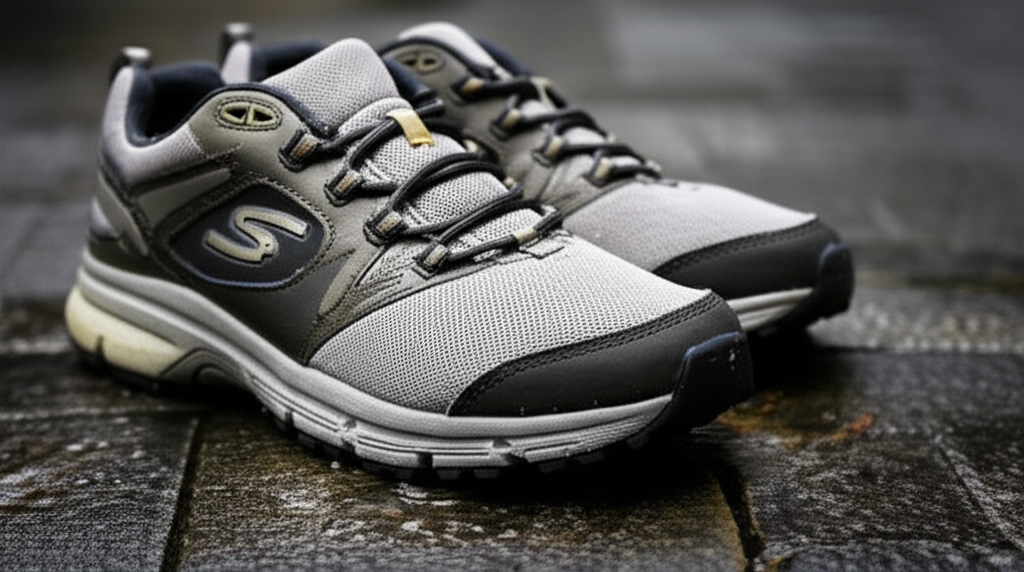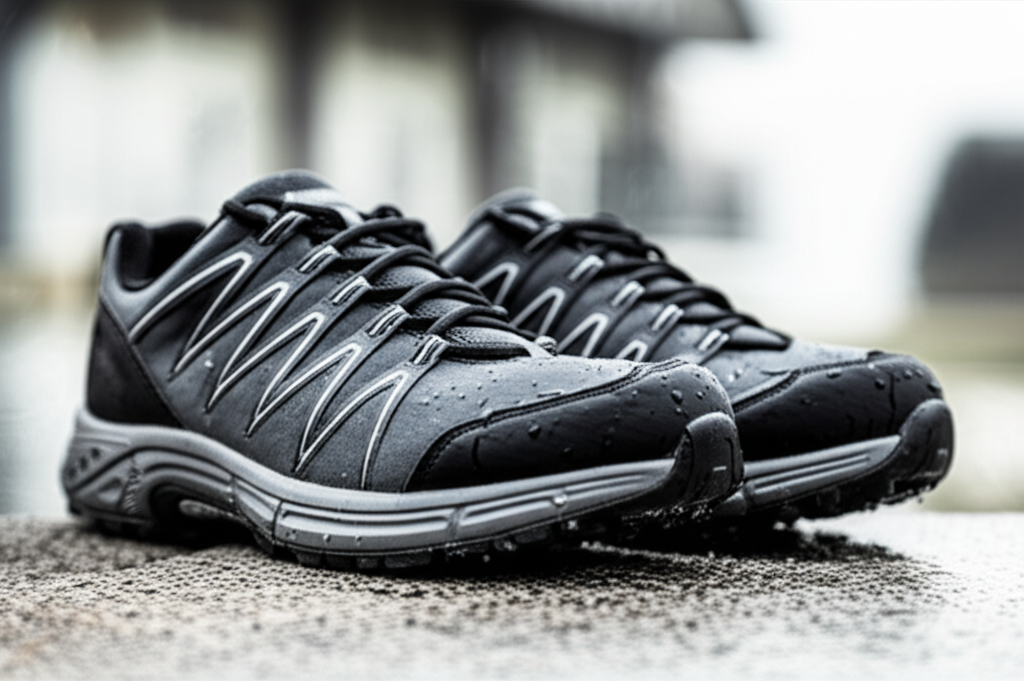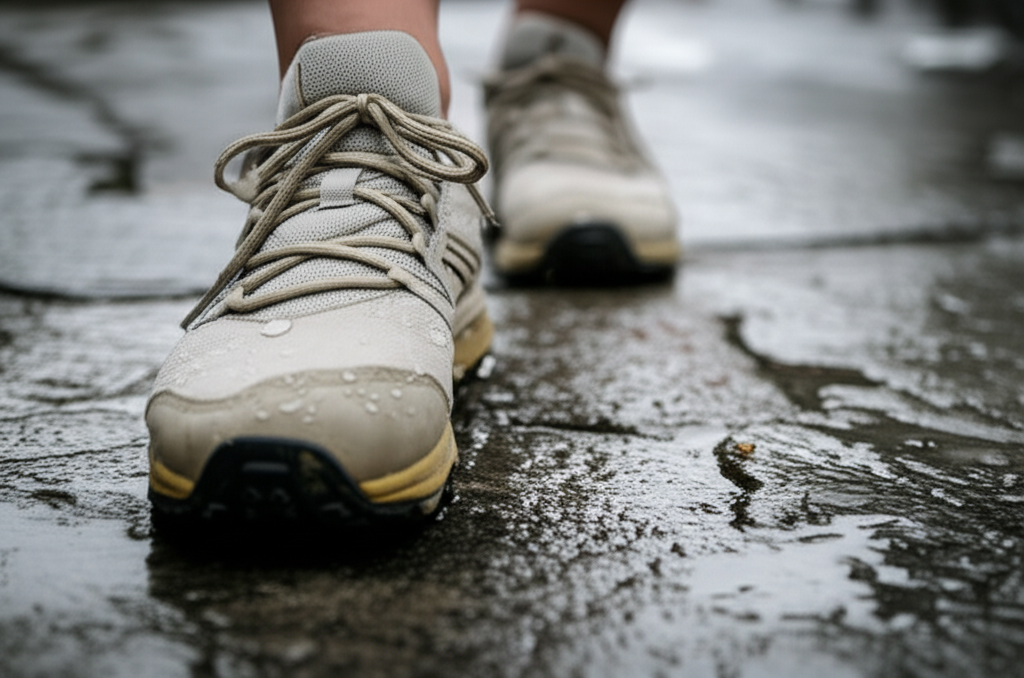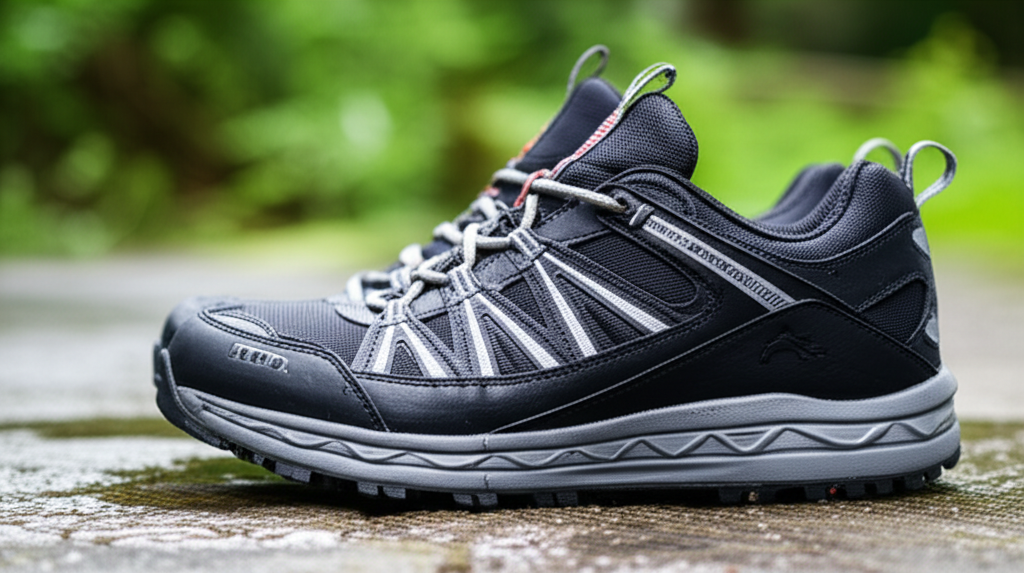Are Walking Shoes Waterproof? Uncover Your Comfort
Most standard walking shoes are not waterproof, but many are water-resistant. True waterproof walking shoes use specialized materials and construction to keep your feet dry in wet conditions, offering superior protection for puddles and rain.
Key Takeaways
- Understand the difference between water-resistant and waterproof footwear.
- Look for specific waterproof materials and technologies.
- Consider your walking environment when choosing shoes.
- Waterproof shoes offer enhanced protection from moisture.
- Proper care extends the life of waterproof features.
When you’re out for a walk, the last thing you want is to have your feet get soaked. It can be uncomfortable, lead to blisters, and generally ruin your outdoor adventure. This is why many people wonder: are walking shoes waterproof? It’s a common question, and the answer isn’t always a simple yes or no. Many walking shoes offer some level of protection against moisture, but not all are designed to be completely waterproof. Let’s break down what makes a walking shoe waterproof and how to find the right pair for your needs.
Understanding Waterproof vs. Water-Resistant

It’s crucial to know the difference between “water-resistant” and “waterproof.” These terms are often used interchangeably, but they mean very different things when it comes to your footwear.
Water-Resistant Walking Shoes
Water-resistant shoes are designed to repel light moisture. Think of a gentle drizzle or shallow puddles. They might have a tightly woven upper or a special coating that helps water bead up and roll off. However, if you step into deeper water or are out in heavy rain for an extended period, the water will eventually soak through. These shoes are great for everyday wear in varied conditions but aren’t ideal for serious wet-weather hiking or prolonged exposure to rain.
Waterproof Walking Shoes
Waterproof walking shoes offer a much higher level of protection. They are constructed with specialized membranes and materials that are designed to prevent water from entering the shoe entirely. This means you can walk through puddles, stand in wet grass, or navigate rainy trails with confidence, knowing your feet will stay dry. These shoes are essential for anyone who frequently encounters wet environments or needs reliable protection against the elements.
What Makes a Walking Shoe Waterproof?
Several key features contribute to a walking shoe’s waterproof capabilities. Understanding these will help you make an informed decision when shopping.
Waterproof Membranes
The most common technology used in waterproof footwear is a waterproof and breathable membrane. The most well-known example is GORE-TEX®. These membranes are incredibly thin layers of material with millions of tiny pores. These pores are small enough to prevent liquid water molecules from passing through but large enough to allow water vapor (sweat) to escape. This keeps your feet dry from the outside and comfortable by managing perspiration from the inside.
Other brands have their own proprietary waterproof membranes, such as:
- eVent
- OutDry
- SympaTex
- NeoShell
When looking for waterproof shoes, check the product description for mentions of these technologies. They are often integrated into the shoe’s lining.
Sealed Seams
Even with a great waterproof membrane, water can seep in through the seams of the shoe. High-quality waterproof walking shoes will have their seams taped or sealed. This means a waterproof tape is applied over the stitched seams, creating a watertight barrier. This is a critical component for true waterproofing, especially in areas where different parts of the shoe upper are joined together.
Water-Repellent Coatings and Materials
The outer materials of waterproof shoes also play a role. Many are treated with Durable Water Repellent (DWR) coatings. This treatment causes water to bead up and roll off the surface, preventing the material from becoming saturated. Common materials treated with DWR include:
- Leather (especially full-grain and treated synthetics)
- Ripstop nylon
- Polyester
While DWR is excellent for shedding light moisture, it’s not a substitute for a waterproof membrane and sealed seams for complete waterproofing.
Gusseted Tongue
A gusseted tongue is attached to the shoe’s upper along the sides, creating a barrier that prevents water, dirt, and debris from entering the shoe from the top. This is a common feature in hiking boots and many waterproof walking shoes, adding an extra layer of protection against the elements.
Choosing the Right Waterproof Walking Shoes for Your Needs

Deciding whether you need waterproof walking shoes depends largely on where and how you plan to use them. Consider these factors:
Your Typical Walking Environment
Do you live in a rainy climate? Do you often walk on trails with streams or dewy grass? Do you walk in the snow? If your typical walking involves significant exposure to moisture, waterproof shoes are a wise investment. For casual strolls on dry, paved paths, standard water-resistant shoes might suffice.
Activity Level and Intensity
If you’re going for long hikes or challenging treks where getting wet feet could lead to discomfort or injury, waterproof shoes are essential. For light, short walks, the need is less critical. Also, consider breathability. While waterproof shoes aim to be breathable, highly waterproof options can sometimes feel warmer than non-waterproof ones, which might be a concern in very hot climates.
Durability and Construction
Waterproof walking shoes often involve more complex construction and specialized materials, which can sometimes mean a higher price point. Look for shoes with robust outsoles for good traction and durable uppers that can withstand wear and tear. Reputable brands often invest more in the quality of their waterproof technologies and construction.
Benefits of Waterproof Walking Shoes
Investing in waterproof walking shoes offers several distinct advantages, especially for those who prioritize comfort and foot health in all weather conditions.
Enhanced Comfort in Wet Conditions
The most obvious benefit is keeping your feet dry. Wet feet can become cold, uncomfortable, and prone to painful blisters. Waterproof shoes provide a barrier against rain, puddles, and damp surfaces, allowing you to walk with confidence and comfort regardless of the weather.
Protection Against Foot Issues
Prolonged exposure to moisture can create an environment where bacteria and fungi thrive, potentially leading to infections like athlete’s foot. Keeping your feet dry with waterproof shoes helps maintain a healthier foot environment and can prevent these common issues.
Increased Durability and Longevity
While the initial cost might be higher, waterproof walking shoes are often built with more durable materials and construction techniques to withstand the demands of wet weather. This can translate to a longer lifespan for your shoes, making them a worthwhile investment over time.
Versatility for All Seasons
Waterproof shoes aren’t just for rainy days. They can also be beneficial in winter for walking through snow and slush. This versatility makes them a practical choice for year-round use, especially if you enjoy outdoor activities regardless of the season.
Waterproof Technologies and Materials to Look For

When you’re in the store or browsing online, here are specific terms and materials that indicate a shoe is likely waterproof. It’s always best to check the product specifications or ask a sales associate.
Key Technologies and Materials:
- GORE-TEX®: The gold standard in waterproof-breathable membranes.
- Proprietary Waterproof Membranes: Brands like The North Face (Futurelight), Columbia (Omni-Tech), and Merrell (M Select DRY) have their own versions.
- Sealed Seams: Essential for preventing water entry through stitching.
- Water-Repellent Leather: Full-grain or treated leather that naturally resists water.
- Synthetic Uppers with DWR: Materials like ripstop nylon or polyester treated for water repellency.
- Rubberized or Coated Toe Caps and Heels: These areas often receive extra protection.
Comparing Waterproof Walking Shoes to Other Footwear
It’s helpful to see how waterproof walking shoes stack up against other types of footwear you might consider for outdoor activities.
| Shoe Type | Water Protection | Breathability | Best Use Cases | Typical Cost |
|---|---|---|---|---|
| Standard Walking Shoes | Low (Water-Resistant) | High | Dry, casual walks, light gym use | $50 – $120 |
| Waterproof Walking Shoes | High (Waterproof) | Moderate to High | Wet weather, rainy climates, damp trails | $80 – $180+ |
| Trail Running Shoes (Waterproof) | High (Waterproof) | Moderate | Off-road trails, muddy conditions, trail running | $100 – $200+ |
| Hiking Boots (Waterproof) | Very High (Waterproof) | Moderate | Rugged terrain, heavy loads, serious hiking, extreme wet/cold | $120 – $300+ |
| Casual Sneakers | Very Low | High | Dry, everyday wear, indoor activities | $40 – $100 |
Maintaining Your Waterproof Walking Shoes
To ensure your waterproof walking shoes continue to perform as intended, proper care and maintenance are essential. Waterproofing treatments and membranes can degrade over time if not cared for correctly.
Cleaning Your Shoes
After a walk, especially in muddy or wet conditions, clean your shoes. Remove excess dirt with a soft brush. For a more thorough clean, use a mild soap and cool water. Avoid harsh detergents or abrasive cleaners, as these can damage the waterproof membrane and coatings. Allow shoes to air dry naturally away from direct heat sources like radiators or fires, which can crack the materials.
Reapplying Water-Repellent Treatments
The DWR coating on the exterior of your shoes will wear off over time. You can easily reapply this treatment using sprays or wipes available from outdoor gear retailers. Follow the product instructions carefully, and typically, you’ll apply it to clean, dry shoes. This helps maintain the “beading” effect of water on the shoe’s surface.
Revitalizing Waterproof Membranes
While waterproof membranes like GORE-TEX® are durable, their breathability can be affected by dirt and oils. Regular cleaning helps maintain their performance. If you notice your waterproof shoes are no longer keeping your feet dry even after cleaning and reapplying DWR, the membrane itself might be compromised or have reached the end of its lifespan. In some cases, professional shoe repair services might be able to help, but often, it’s time to consider a new pair.
Pro Tip: Always check the manufacturer’s care instructions for your specific shoe model. Different materials and technologies may have slightly different care requirements.
Common Misconceptions About Waterproof Walking Shoes
There are a few common misunderstandings about waterproof footwear that can lead to disappointment. Let’s clear them up:
Misconception 1: All Walking Shoes Are Waterproof
As we’ve discussed, this is not true. Most everyday walking shoes are water-resistant at best. True waterproof shoes are specifically designed and marketed as such, often featuring advanced materials and construction.
Misconception 2: Waterproof Means Feet Won’t Sweat
Waterproof shoes are designed to keep external water out, but they also aim to allow internal moisture (sweat) to escape. This is the “breathable” aspect. However, in very high-intensity activities or extremely humid conditions, even the most breathable waterproof shoes might not keep your feet completely dry from sweat. Some people prefer non-waterproof shoes for high-exertion activities in warm weather to maximize breathability.
Misconception 3: Waterproof Shoes Are Always Heavy and Stiff
While some heavy-duty waterproof hiking boots can be stiff, modern waterproof walking shoes are often quite lightweight and flexible. Manufacturers are constantly innovating to balance waterproofing, breathability, and comfort for various activities.
Misconception 4: Waterproofing Lasts Forever
Waterproof membranes and DWR coatings are not permanent. They can wear down over time due to abrasion, dirt, UV exposure, and general use. Regular maintenance is key to prolonging their effectiveness.
When to Opt for Non-Waterproof Walking Shoes
While waterproof shoes offer great benefits, there are situations where non-waterproof options might be a better choice:
- High-Heat Environments: If you primarily walk in very hot and dry climates, the extra layer of a waterproof membrane can make your feet feel uncomfortably warm and sweaty. Highly breathable, non-waterproof shoes would be more comfortable.
- Intense Cardio Activities: For activities like fast-paced running or interval training where your feet generate a lot of heat and sweat, maximizing breathability is often more critical than waterproofing.
- Budget Constraints: Waterproof walking shoes typically cost more. If your budget is tight and you don’t frequently encounter wet conditions, a good pair of water-resistant walking shoes might be sufficient.
- Quick Drying Needs: If your shoes are likely to get wet but need to dry very quickly (e.g., for water sports or frequent stream crossings where you expect them to get soaked), non-waterproof shoes made of quick-drying mesh might be preferable.
For more information on shoe materials and their properties, resources like the FEMA building science resources, while not directly about shoes, highlight the importance of material science in creating barriers against elements.
Frequently Asked Questions (FAQ)
Q1: How can I tell if my current walking shoes are waterproof?
A: Check the product label, description, or manufacturer’s website for terms like “waterproof,” “GORE-TEX®,” or other proprietary waterproof technologies. If it only mentions “water-resistant” or has no mention of water protection, they are likely not waterproof.
Q2: Will my feet get sweaty in waterproof walking shoes?
A: Waterproof shoes are designed to be breathable, allowing sweat to escape. However, breathability varies, and in very hot conditions or during intense activity, you might still experience some moisture from sweat. They are generally more breathable than rubber boots.
Q3: Can I wear waterproof walking shoes in hot weather?
A: You can, but they may feel warmer than non-waterproof shoes. If extreme heat is your primary concern, opt for highly breathable, non-waterproof walking shoes made of mesh. For variable weather that includes heat and potential rain, waterproof shoes can still be a good choice.
Q4: How often should I reapply waterproof treatments to my shoes?
A: It depends on how often you wear them and in what conditions. Generally, reapplying a DWR treatment every few months or when you notice water no longer beads up on the surface is recommended. Always follow the product’s instructions.
Q5: Are waterproof walking shoes heavier than non-waterproof ones?
A: Often, they are slightly heavier due to the added waterproof membrane and construction. However, advancements in materials mean many waterproof walking shoes are remarkably lightweight and flexible, comparable to many non-waterproof models.
Q6: What is the best waterproof walking shoe for everyday use?
A: For everyday use in mixed weather, look for a comfortable, well-cushioned walking shoe from a reputable brand that explicitly states it uses a waterproof membrane like GORE-TEX® and has sealed seams. Brands like Merrell, Columbia, Keen, and Brooks often offer excellent options.
Conclusion
So, are walking shoes waterproof? The answer, as we’ve seen, is that many are not, but many are designed to be. Understanding the distinction between water-resistant and waterproof is your first step to making the right choice. By looking for specific technologies like waterproof membranes (GORE-TEX® is a popular example) and sealed seams, and considering your typical walking environment, you can find a pair of walking shoes that will keep your feet dry and comfortable. Whether you need them for rainy commutes, damp trails, or simply unpredictable weather, investing in waterproof walking shoes can significantly enhance your walking experience. Choose wisely, care for them properly, and enjoy your walks, no matter what the weather brings!

